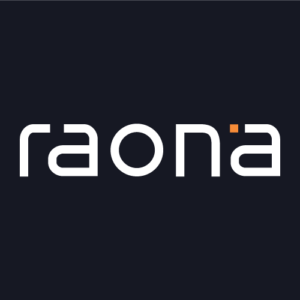Menu


We explain everything you need to know about Digital Workplace. At Raona we are specialists in developing solutions with Microsoft technology.
The Digital Workplace is the digital gateway to the corporate environment, it is your window to everything that is communicated and shared in the company and everything you have to be informed about.
We came from the traditional intranet in which communication was from the company to the employee and very specific corporate content was shared and oriented to information, as interesting content for consumption and not for use in day-to-day work.
Thanks to technological evolution, the stagnant vision of the Intranet is opening up and moving towards the Digital Workplace, a solution that connects with all the systems we have in our organization and that shows the information and content necessary to be more committed to the company and everything related to its values, future strategy, corporate culture and also to be more efficient in the performance of our daily responsibilities.
The Digital Workplace is the core of the Digital Employee Experience and employee empowerment, and is therefore the first accelerator of the digital transformation of employees.
The Digital Workplace has become the cornerstone for driving engagement strategies, employee experience, internal communication, collaboration, security and confidentiality and essential in the corporations of the future, policies focused on innovation.
The Digital Workplace offers numerous advantages and benefits that make the adoption of this strategy essential in the digital era. Among many issues, here are four key areas where the Digital Workplace can improve the work experience and business performance:
Many organizations are readapting their businesses to technology, and now with even more speed and justification because of the paradigm shift caused by the pandemic.
Here are 10 essential guidelines for adapting to the work environment of the future.
Leading organizations, or those leading the digital charge, have already moved beyond the digital workplace design phase and are now actively building digital workplaces.
Transformation to a digital workplace starts with structural and organizational redesign. It re-evaluates and adjusts internal processes, communication and collaboration to adapt to a digital and agile environment.
It is essential to offer 100% up-to-date content available at any time from any platform.
Speed and efficiency are essential in the Digital Workplace. It is essential that your systems and tools enable real-time communication and collaboration between employees, departments and teams.
Recruiting is already a digital experience, candidates expect convenience and mobile contact. Digital companies adopt these policies to underscore their digital credentials.
Attract and retain professionals with digital skills and technology expertise. This includes both IT specialists and employees with digital skills in their area of expertise.
Digital companies focus on employee engagement and integrate a new approach to creating work experiences. Through information feedback and self-service capabilities, corporate culture is highly reinforced.
It fosters a corporate culture that is open to innovation and learning. Employees must be comfortable experimenting with new technologies and adapting to changes in their work environment.
Human resources are and will be one of the key players in the digitization of documents and processes, as well as workplaces, and will play a role in delivering technologies that change the way employees work.
Tools and applications must facilitate collaboration, communication and work management. This includes project management, internal communication systems and cloud storage solutions.
Companies that have undergone digital transformation processes need to reevaluate their management programs.
Establish performance indicators and metrics to evaluate the success of the Digital Workplace implementation. It is essential to measure productivity, efficiency and employee satisfaction.
Digital corporations need new leaders who are agile and more digitally-integrated.
Promote leadership that is willing to break away from traditional approaches and embrace new ways of thinking. Leaders must be open to change and encourage their teams to explore innovative solutions.
Corporate HR leaders forced to take on a greater role in digital organizations will be key to ensuring that the organization is committed to a digital transformation.
Digital HR processes, including recruitment, training and performance appraisal, are critical. Digital solutions are the best way to improve the employee experience and optimize talent management.
Use data analytics and key performance indicators (KPIs) to monitor and continuously improve the implementation of the Digital Workplace. Make sure decisions are data-driven and adjust your strategies as needed.
Digital organizations will be forced to experiment with new cognitive tools and reorganize people roles as work processes become automated.
Keep an eye on the future and the emerging trends in the digital workspace. Make sure your company is prepared to adapt to changes in technology, regulations and employee expectations.
Labor relations have changed, but more importantly, so have the different ways in which each company is organized and articulated. Technological innovation is developing at an unstoppable pace, so fast that it is difficult for us to understand all that it entails. At the same time, today we are more connected than ever and information has become much more accessible and easier to share. That is why the Digital Workplace must be integrated into corporations to take on the challenges that Digital Transformation presents. Here are five points to measure the success of the Digital Workplace in your company.
This has brought us to a generational breaking point: many employees are dissatisfied with their work and it is becoming increasingly difficult to build customer loyalty. In fact, young Spaniards prefer to start their own business or work in start-ups rather than in traditional organizations that do not meet the priorities of this segment of the population. Let’s keep in mind that millennials, the main work engine of the coming years, have flexibility as their most appreciated value in the workplace.
It is clear that we need to carry out a digital transformation in companies where the evolution of technology is not enough, as it has been in the last decades, since it is only a facilitator of the process, but not its core. Digital transformation will not happen only because we invest in technological change, we need a change of attitude, a new corporate culture, which turns our employees into the protagonists of change.
In our whitepaper, we address this issue by proposing the Digital Workplace as a solution. We also talk about the five benefits of empowering employees, the methodology we use at Raona to find the Digital Workplace Index -key to know what the company should invest in to get better results- and finally, we anticipate the technological trends that will be part of the 2020 decade of the workspace of the employees of our companies.
With this whitepaper on Digital Workplace that you can download now, we want to share Raona’s vision on a topic as current as this to do our bit to help you evolve the corporate culture of your company.


Raona
Compartir en Redes Sociales
© Raona 2023. All Rights Reserved